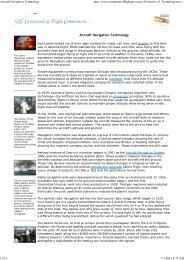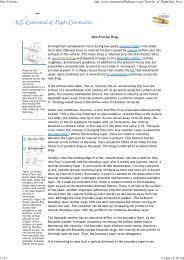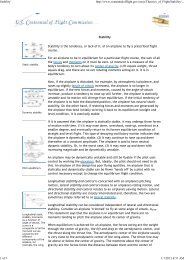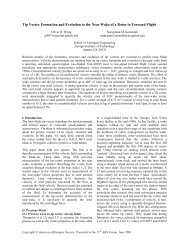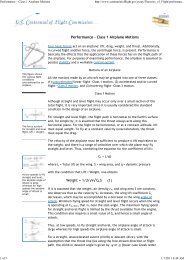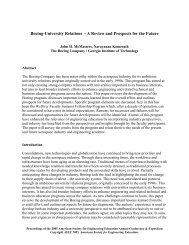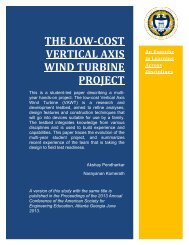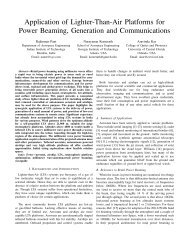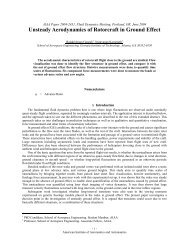Optimization of a Vertical Axis Micro Wind Turbine for Low Tip ...
Optimization of a Vertical Axis Micro Wind Turbine for Low Tip ...
Optimization of a Vertical Axis Micro Wind Turbine for Low Tip ...
You also want an ePaper? Increase the reach of your titles
YUMPU automatically turns print PDFs into web optimized ePapers that Google loves.
Figure 5.Diversion control mode wiring.III.Experimental SetupIII.A.Belt DriveA V-belt drive was used to transfer power between the turbine shaft and the motor-generator shaft. Ideally,the pulley on the turbine shaft would be larger than that on the motor-generator shaft when the turbine isrunning the motor and vice versa when the motor is running the turbine. However, since it was deemed toocomplicated/expensive to implement a mechanism <strong>for</strong> changing gears automatically, a gear ratio <strong>of</strong> 1:1 wasused.III.B.Charging CircuitThe use <strong>of</strong> a motor-generator to run the turbine up to operating speed requires changes to be made to thetypical charging circuit, since most manufacturers <strong>of</strong> renewable energy (RE) charge controllers assume aturbine will be purely wind-powered. Figure 5 shows the original circuit which was modified in order to runthe motor <strong>of</strong>f <strong>of</strong> the battery bank. The charge controller does not regulate the voltage to the battery whenin diversion control mode. Instead, it only monitors the voltage <strong>of</strong> the battery and switches the circuit tothe dump load when it sees that the battery is fully charged. When this happens, excess energy will bediverted to the diversion load and dissipated as heat. A pair <strong>of</strong> fuses was used to protect the battery andsensitive components from spikes in voltage and current. The switches in Figure 5 can be used to manuallydisconnect the motor from the battery and/or the battery from the charge controller.To keep the turbine spinning in the same direction regardless <strong>of</strong> whether the motor is running the turbineor vice versa, a DPDT switch has been included in the circuit. Figure 6 shows the modified circuit in thecharging configuration; the DPDT switch is in the upper left portion <strong>of</strong> the image. When both the renewable5 <strong>of</strong> 11American Institute <strong>of</strong> Aeronautics and Astronautics



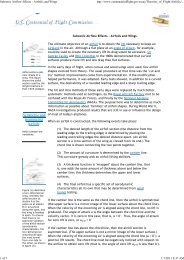

![p density of fluid, kg/m3 [Greek letter rho] V mean velocity of fluid, m ...](https://img.yumpu.com/50595898/1/184x260/p-density-of-fluid-kg-m3-greek-letter-rho-v-mean-velocity-of-fluid-m-.jpg?quality=85)
